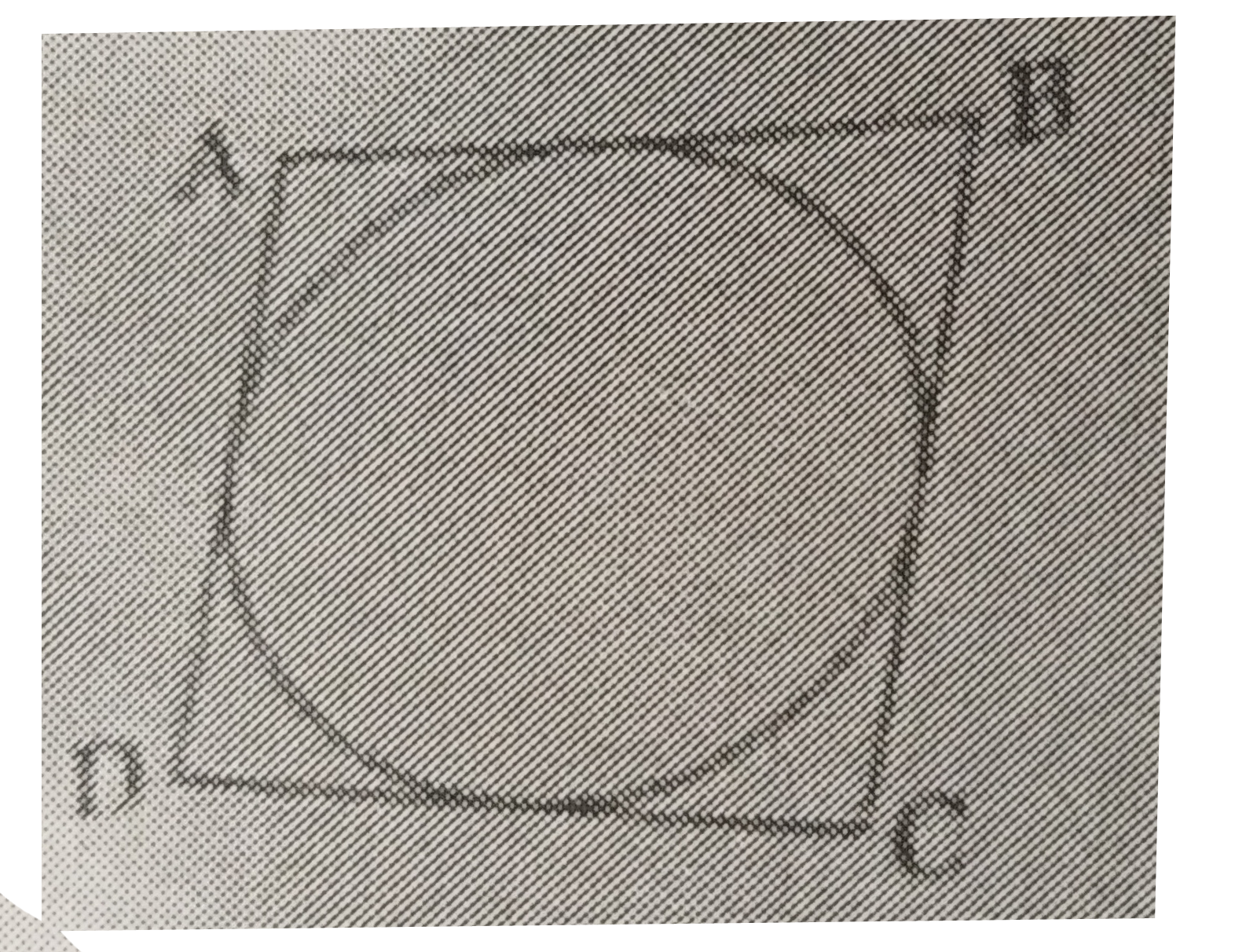Assertion (A) In the given figure, a quad. ABCD is drawn to circumscribe a given circle, as shown
Then, AB+BC=AD+DC.

Reason (R ) In two concentric circles, the chord of the larger circle, which touches the smaller circle, is bisected at the point of contact.
Both Assertion (A) and Reason (R ) are true and Reason (R ) is a correct explanation of Asseration (A).
Both Assertion (A) and Reason (R ) are true but Reason (R ) is not a correct explanation of Asseration (A).
Assertion(A) is true and Reason (R ) is false.
Assertion(A) is false and Reason (R ) is true.
A is false. Correct relation is AB+CD=AD+BC.
R is true
Hence, the correct answer is (d).
Topper's Solved these Questions
- CIRCLESBOOK - RS AGGARWALCHAPTER - CIRCLESEXERCISE - Test Yourself
20 Videos
- CIRCLESBOOK - RS AGGARWALCHAPTER - CIRCLESEXERCISE - Multiple-choice questions (MCQ)
39 Videos
- ARITHMETIC PROGRESSIONBOOK - RS AGGARWALCHAPTER - ARITHMETIC PROGRESSIONEXERCISE - Multiple Choice Questions (Mcq)
30 Videos
- CONSTRUCTIONSBOOK - RS AGGARWALCHAPTER - CONSTRUCTIONSEXERCISE - Test Yourself
10 Videos
Similar Questions
Prove that in two concentric circles, the chord of the larger circle, which touches the smaller circle, is bisected at the point of contact.
View SolutionProve that in two concentric circles, the chord of the larger circle which touches the smaller circle is bisected at the point of contact.
View Solution
Knowledge Check
In two Concentric circles, AB and CD are two chords of the outer circle which touch the inner circle at E and F. Then :
AAB = CDBAB=12CDCAB≠CDDNone of theseTwo concentric circles are of radii 13 cm and 5 cm. The length of the chord of the larger circle which touches the smaller circle is:
दो संकेंद्री वृत्तों की त्रिज्या 13 सेमी तथा 5 सेमी है। बड़े वृत्त की जीवा की लंबाई ज्ञात कीजिए, जो छोटे वृत्त को स्पर्श करती है।A6 cmB7 cmC10 cmD8 cm
In two concentric circle, prove that a chord of larger circle which is tangent to smaller circle is bisected at the point of contact.
View SolutionIn two concentric circles prove that all chords of the outer circle which touch the inner circle are of equal length.
View SolutionIn Figure, a quadrilateral ABCD is drawn to circumscribe a circle .
Prove that
AB+CD=BC+AD

View SolutionA quadrilateral ABCD is drawn to circumscribe a circle. Prove that AB+CD=AD+BC
View SolutionTwo concentric circles are of radii 5 cm and 3 cm. Find the length of the chord of the larger circle which touches the smaller circle.
View SolutionTwo concentric circles are of radii 5 cm and 3 cm. Find the length of the chord of the larger circle which touches the smaller circle.
View Solution
